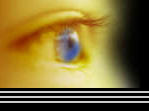Mined South African Spheres That Belie History
By James Donahue
Among the many anomalies that defy all established
belief systems are the Klerksdorp Spheres, hundreds of small spherical or disk shaped stones that not only appear artificially
shaped and polished, but some of them containing carved grooves, that emerged from deep in the mines of South Africa.
What makes the spheres a scientific puzzle
is the fact that they were found deep in a Precambrian strata of the earth, which suggests they were made about 2.8 billion
years ago. While the pieces might have been made by natural events, scientists, archaeologists and geologists say they cannot
explain how fine grooves could have been carved around some of them.
Michael Cremo, author of the book Forbidden
Archaeology and writer Richard Hoagland, who maintains an interesting website, both suggest that the spheres were made by
intelligent beings . . . either aliens from other worlds who visited Earth, or an early and now extinct race of beings that
once lived on the planet.
Then there are the hard-line scientific types,
so bound by the imprint of the reality we have been programmed to collectively experience, that anomalies like multi-billion-year-old
manufactured objects must be explained away because they don’t belong here.
Thus we have geologists arguing that the
strange shaped nuggets came from natural pyrophyllite deposits, without trying to explain how the perfectly lined grooves
got in them.
A lengthy essay on the spheres by Mineralogist
Paul Heinrich, published in 1996 in response to a televised documentary that mentioned the pieces, identified the spheres
as “metamorphic nodules that formed during the alteration of either clay or volcanic ash to pyrophyllite by metamorphism.
The goethite spheres are pyrite nodules altered by weathering near the ground surface.”
In other words, Heinrich is arguing they
are naturally formed objects that were polished and shaped by weathering, possibly at some distant time in history before
they were somehow sucked back deep in beds of rock.
Heinrich deals with the three parallel grooves
in what he insisted were one sphere out of hundreds by suggesting that they were carved “innocently just as folk art
and later mistakenly thought to have been present when it was found.”
The problem with that argument is that more
than one of the spheres has been found with grooves cut in them.
There is yet another piece to this puzzle
allegedly discovered by John Hund and NASA scientists after Hund found one of the spheres, noted something strange about its
design, and took it to the California Space Institute for close examination.
As the story is told, Hund was playing with
the stone on a flat surface and realized it was very well balanced. At the institute it was discovered that the balance “exceeded
the limit of their measuring technology.”
Hund is quoted as saying that the stone is
balanced “to within one-hundred thousandths of an inch from absolute perfection.”
It is a great story, and seems to support
the theory that the spheres are of alien origin. But there is one flaw. NASA apparently has never heard of John Hund or examined
such a stone in its lab. Attempts at confirmation have gone unanswered.
Merely examining the pieces in the photographs
clearly shows that while they are certainly unusual, and seem to have been the work of an intelligent hand, the spheres are
not perfectly made, nor are they balanced to the perfection described in the Hund story.

